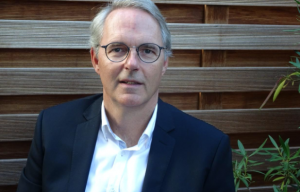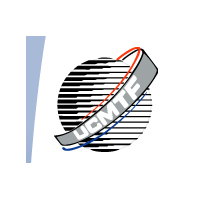
Hugues Schellenberg elected new UCMTF President
UCMTF President: 2010 Interview Bruno Ameline, the President and Evelyne Cholet, the Secretary General of UCMTF (French Textile Machinery Manufacturers Association) report on the present state of the French textile machinery manufacturers and analyze their strategy to bring value to their customers. Have Textile machinery manufacturers been hard hit by the financial and economic crisis? Bruno Ameline The industrial equipment sector is extremely cyclical and our compani

8th April 2010
Innovation in Textiles
|
Paris
 UCMTF President: 2010 Interview
UCMTF President: 2010 Interview8 April 2010, Paris - Bruno Ameline, the President and Evelyne Cholet, the Secretary General of UCMTF (French Textile Machinery Manufacturers Association) report on the present state of the French textile machinery manufacturers and analyze their strategy to bring value to their customers.
Have Textile machinery manufacturers been hard hit by the financial and economic crisis?
Bruno Ameline
The industrial equipment sector is extremely cyclical and our companies have to adapt to major investment phases like in 2006 and 2007 and to brutal stops but no one could have expected such the sudden crash that began in the summer of 2008. In 2009 our companies have seen their turnover go down by 30% on average with extreme as high as 50%.
Textile fibres consumption grows at an average rate of 3.4% per annum, therefore production facilities have to be expanded and modernized. In 2008 it decreased by more than 6% which is without precedence in recent history. The economic downturn was coupled with a financing crunch for investment projects and difficulties in obtaining credit insurance in some export countries. Therefore the optimism of our customers turned suddenly to anxiety and investments projects were cancelled or postponed. This has been true all over the world. Even Asian countries on which textile machinery is highly dependent have seen their export markets collapse and have strongly reduced their own investments.
Is the worst over and are the machinery manufacturers on the road to recovery?
Bruno Ameline
I think so. Asian countries like China and India have already recovered, the US seem to emerge from the slump as Europe even if it is a bit slower here. As the textile manufacturers operate closer to full capacity, they become progressively more confident about their future and as financing improves, investments start to pick up again. Another very important incentive to invest is the development of new products which need new production technologies.
Clearly, we see warmer prospects since the end of 2009. Spare parts business is getting back to usual levels up which means the utilization of the existing production facilities has improved, orders for new machines also and many new projects are under discussion. I expect at least a 10% rebound in the first semester of 2010 compared with the very low figures of 2009 and a more robust rebound end of 2010 and in 2011.
This general forecast need to be detailed and contrasted:
By region: the crisis was rather short in China and other Asian countries which started to recover as early as spring 2009, the US are expected to recover soon, Europe will follow.
By application sectors: technical textiles particularly the ones associated with infrastructure projects, the protection of the environment or energy savings will do better than textile for apparel and the home market.
Are the French textile machinery manufacturers well positioned to take advantage of the recovery?
Evelyne Cholet
Yes, our 35 member companies export most of their production for a “normal” annual total of more than Euros 1 billion (close to US$ 1.4 billion). They are specialty manufacturers, SMEs, but world leaders or among the world leaders on niche markets and specific applications. These markets are complex and limited in size. They do not attract the new and large machinery manufacturers from such countries as China or India.
France is particularly strong in weaving preparation and nonwovens and has very vigorous manufacturers in specialized spinning, dyeing and finishing machinery. We have very close relationships with our customers which are particularly important for the technical textile applications which require real partnerships to design the specific technologies to produce new marketable end products.
In China, for example, on September 2008, the government announced a series of measures to encourage investment and consumption. One of the projects concerns doubling the investment in rail networks. It will need millions of square meters of geotextiles which increasingly evolve in the direction of nonwovens solutions. French machinery manufacturers are very well positioned for such investments.
Bruno Ameline
Generally speaking, our companies are well positioned for the future because even if, during the crisis, we have carefully managed our cash reserves, we have continued to invest in R and D in close relationship or partnership with our clients all over the world.
We also have worked very closely with machinery manufacturers offering complementary technologies to offer our customers a “single point of purchase”. More and more, our clients want to get a complete solution, shop for complete lines or even complete plants. We have understood this trend for several years and adapted our offer.
Are energy savings and more generally durable development important in your customers’ decision making process?
The French machinery manufacturers have found very different ways to offer energy saving machines: fine tuning the machine to fit exactly the energy profile of the production process, finding new low energy processes for individual machines and optimizing the energy consumption of a whole production line.
These approaches are not exclusive one from the other, they can be combined. In many examples, the energy saving is in the 30-40 % range, same or even more for the water consumption in dyeing and finishing. A very interesting example in durable development is the collaboration of a recycling machine manufacturer, a distributor of jeans and a charity organization. The distributor of jeans offers a discount on new jeans when customers bring back their "old" ones. These are then collected by the "Emmaüs” charity organization, fiberized and turned into a natural fibre building insulation product with very attractive characteristics. Besides bringing revenues to a charity organization, this allows to reduce consumption of raw materials and of heating or cooling energy for buildings.
Do you feel competition from Asian machinery manufacturers will intensify?
Evelyne Cholet
The Chinese machinery manufacturers have already an important market share on their national market and they are very active exporting, mainly in Asia. For high volume commodity products, Chinese and other Asian manufacturers offer low cost machines with short payback. We cannot compete on these markets but stick to our strategy of specialized manufacturers aiming at niche markets with a tailor made approach to address in depth customers’ needs.
Is the exchange value of the Yuan an important factor?
Bruno Ameline
Probably not so much. The possible variation of the Yuan compared with the Euro is probably in the 10 to 30% range whereas the production cost difference is in bigger magnitude. We can partly take advantage of the low costs in Asia in establishing sourcing solutions for some parts of our machines or, this will be a major issue in the next years, establishing licensing agreements with Asian partners. This is a difficult, time consuming, approach but I think it has to be explored particularly for our smaller companies.
Two ITMAs will take place within one year, in Shanghai and Barcelona. How do you see the future of these shows?
Bruno Ameline
The original thinking when establishing ITMA Asia was to focus ITMA Europe on innovation and technology, and ITMA Asia as a genuine commercial show, a place for Asian customers to easily meet machine manufacturers. The context has changed: innovation is no longer planned according to ITMA schedule; Asian customers want to see the latest innovations as much as western customers do.
Therefore, my personal expectation is that ITMAs in Europe and in Asia will more and more look alike, with as much innovation and “making business” contents. Both will attract regional customers as they want to limit travelling. For both ITMAs the choice of adequate venues is very important. UCMTF being part of Cematex, the owner of both ITMAs, has a particular responsibility in these choices.
Can you tell us which will be UCMTF’s main projects in 2010?
Evelyne Cholet
UCMTF continues to provide logistical support to its members, in order to help them exhibit at selected shows and to enhance their marketing and sales efforts through seminars. In particular, we organize French pavilions in these exhibitions, and seminars in countries of particular interest to us. In 2010 we will support French exhibitors at ITMA Asia and we will organize three seminars, in India, Syria and Turkey.
UCMTF promotes our sector in order to attract young engineering and managerial talents. We focus our efforts towards the best universities and organize every two years a Forum to which we invite textile students from all over France. The last one took place in Mulhouse with more than 200 attendees. UCMTF also sponsors the very appealing challenge organized by ITECH University.
UCMTF program also focuses on sharing information and implementing services among our members, making our network of Small and Middle size Enterprises very effective and proactive.
Last but not least, UCMTF through face to face meetings, interviews, press releases and our web site www.ucmtf.com informs the international trade press about our initiatives.

Business intelligence for the fibre, textiles and apparel industries: technologies, innovations, markets, investments, trade policy, sourcing, strategy...
Find out more